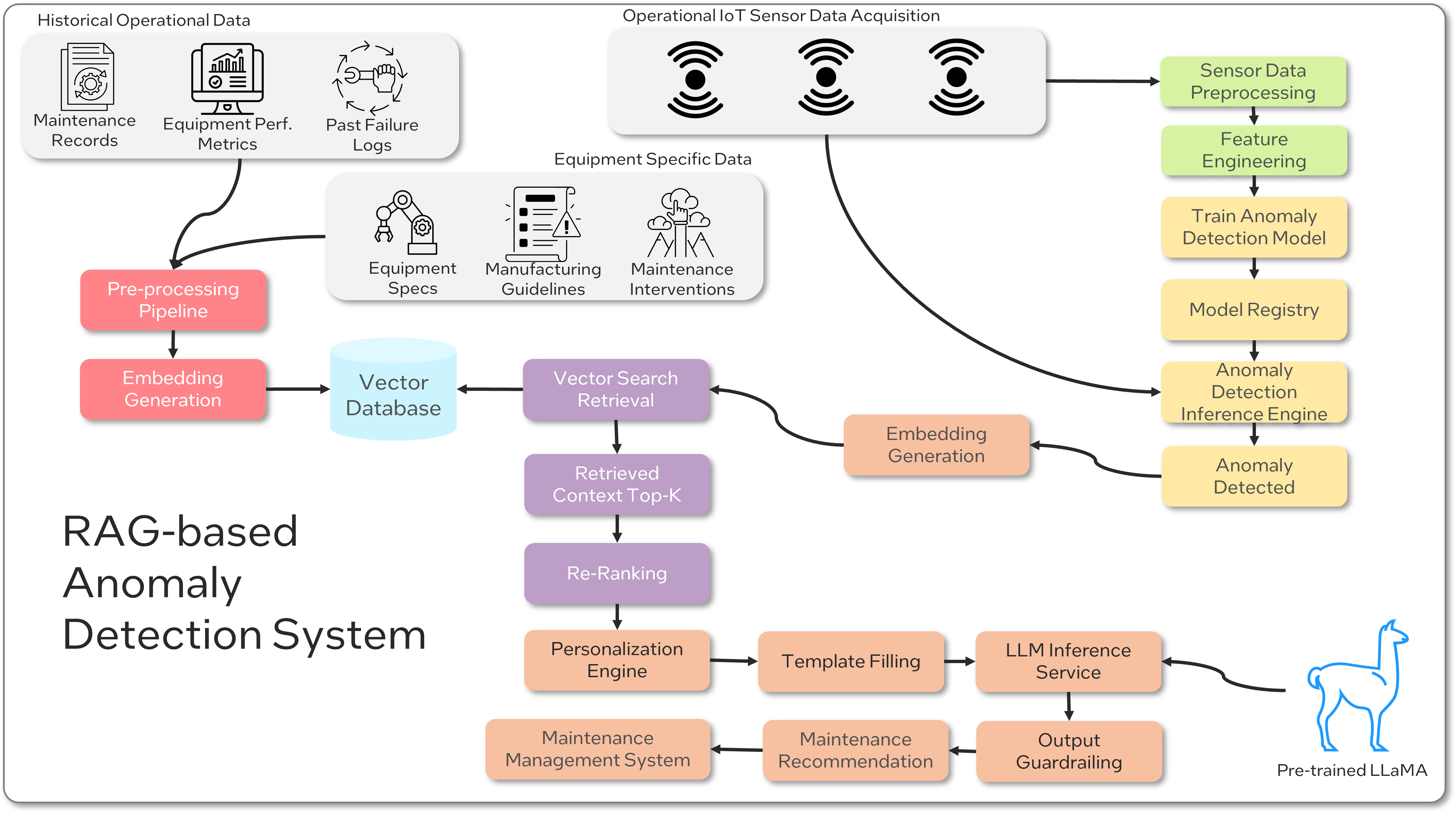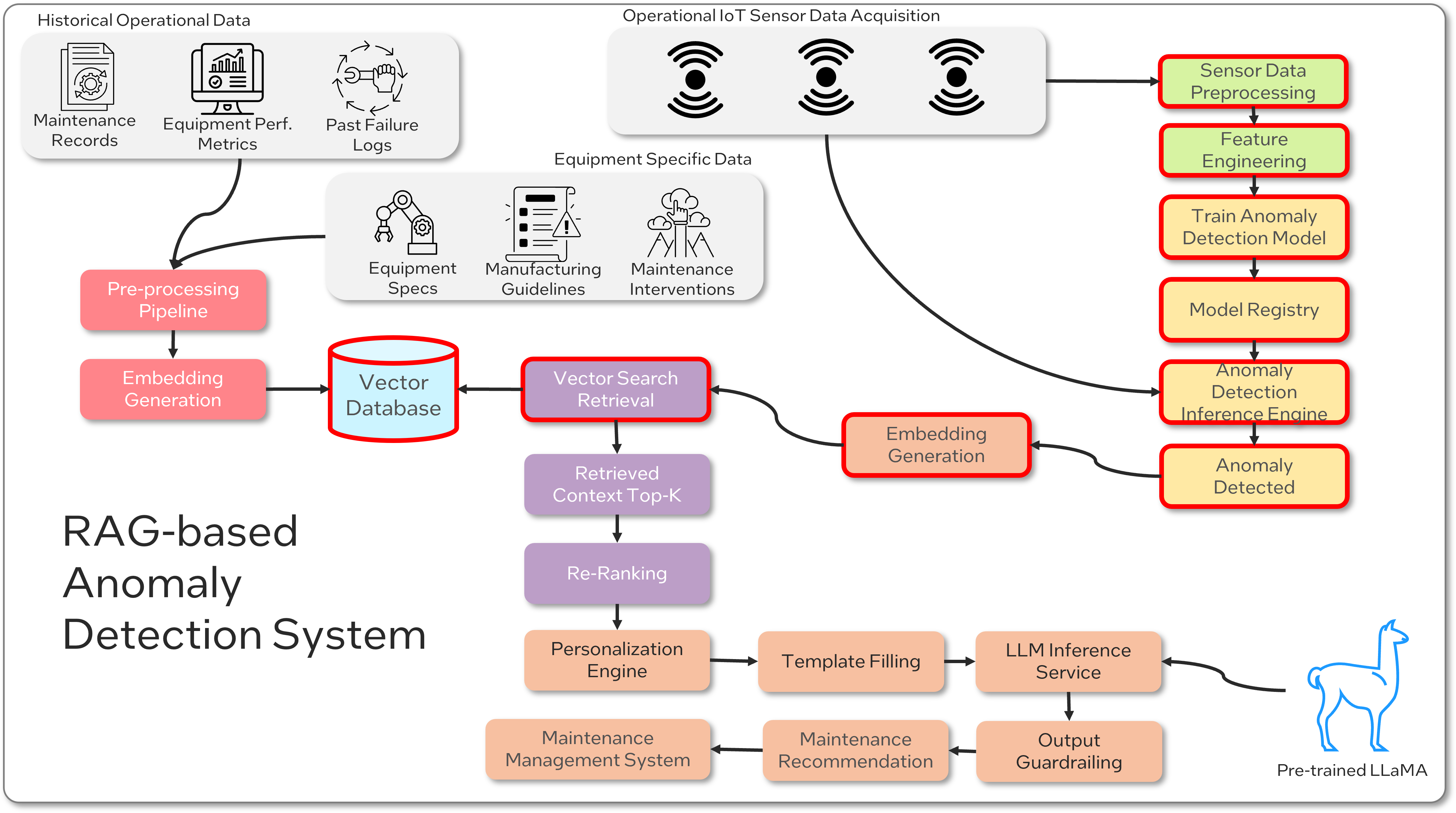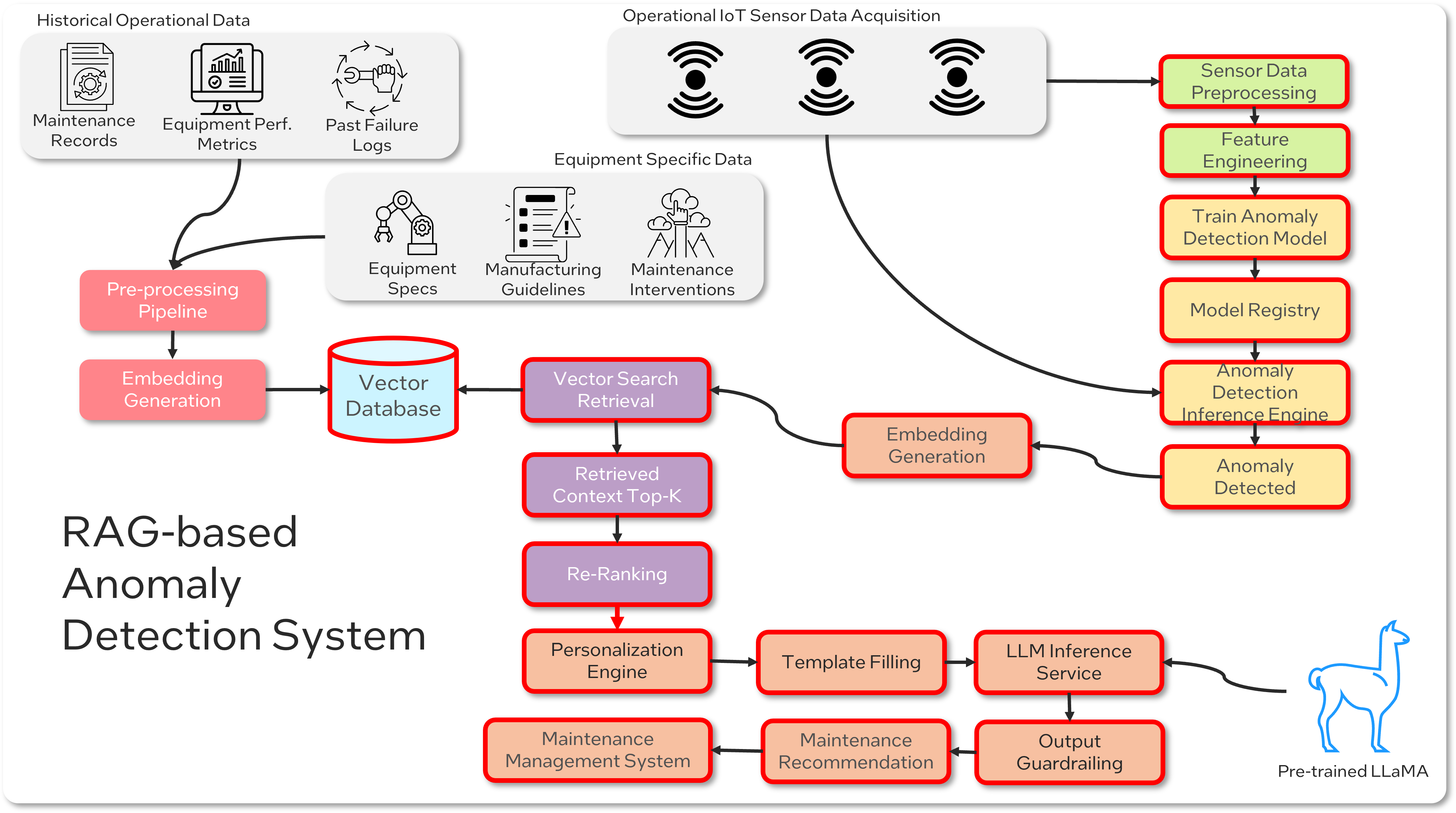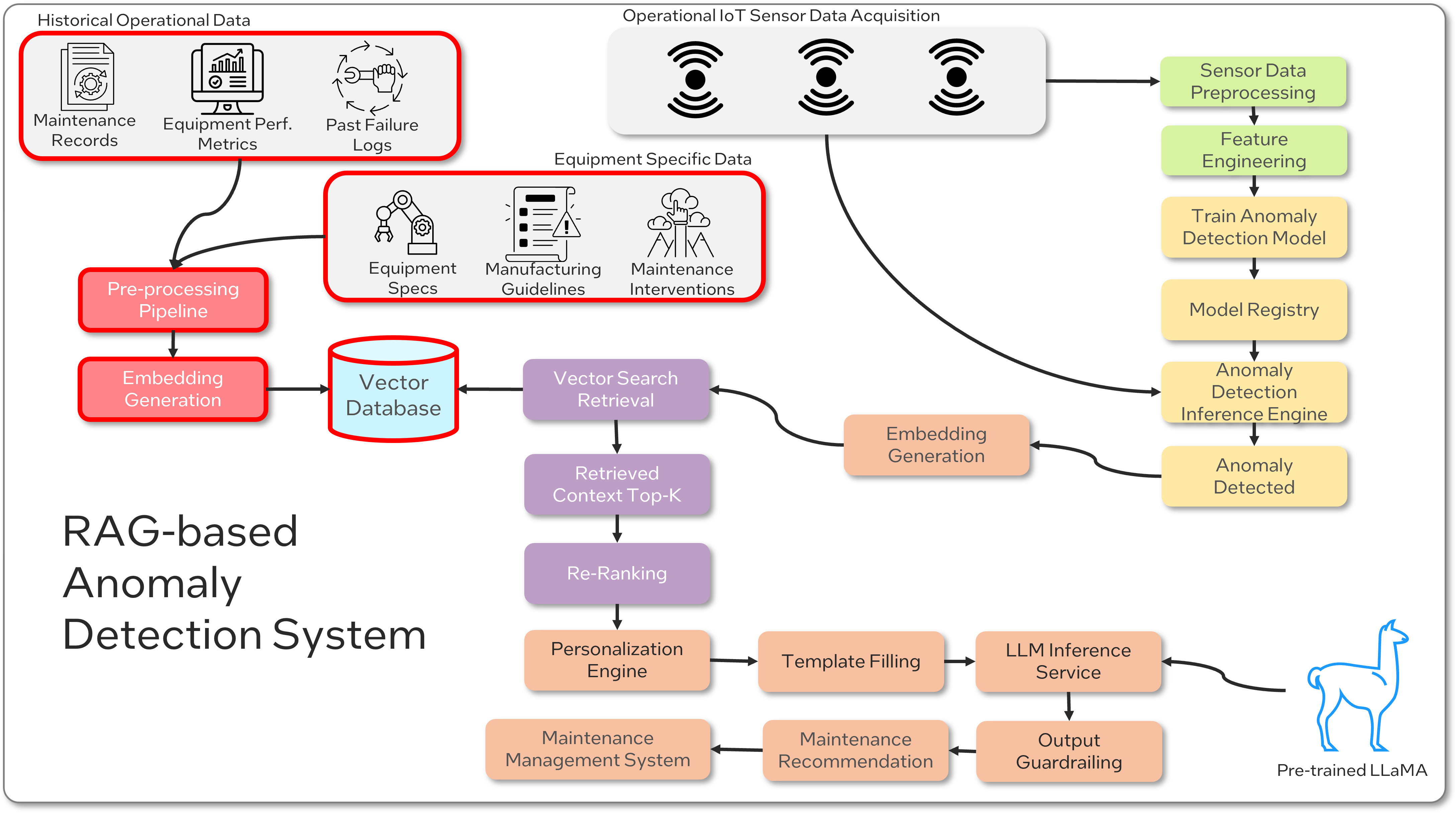This article was originally posted on Medium*.
Keep operations online with actionable, relevant, and effective maintenance strategies using RAG.
In manufacturing, equipment is the backbone of production, and unexpected downtime can have significant financial and productivity consequences. Traditional predictive maintenance models, while helpful, can sometimes miss the subtle signs of impending failure, especially in complex machinery.
A RAG-based anomaly detection system can enhance the predictive maintenance landscape by providing a more insightful and proactive approach to maintaining equipment. By integrating real-time data and advanced retrieval techniques, RAG-based systems can detect subtle signs of anomalies and predict failures before they occur, ensuring the smooth operation of manufacturing processes.
The Cost of Unplanned Downtime
To develop an effective solution, it’s crucial to understand the problem. Unplanned downtime in manufacturing can significantly impact productivity, equipment health, energy efficiency, and operational continuity. Traditional predictive maintenance, which relies heavily on historical failure data, may not be sufficient for complex systems where anomalies can be subtle and devastating.
Subtle anomalies can be particularly challenging to detect, as they may not be apparent in historical data. As a result, traditional predictive maintenance models may not provide accurate predictions, leading to unplanned downtime and financial losses.
To address this challenge, a more dynamic and real-time approach to predictive maintenance is needed.
Introducing RAG for Manufacturing
By using real-time data and advanced retrieval techniques, RAG-based anomaly detection systems can provide a more insightful and proactive approach to predictive maintenance, enabling manufacturers to detect and address anomalies before they lead to unplanned downtime. Let’s take a quick look at a hypothetical example of this technique in action:
MegaAutoParts Inc. (a fictitious company) manufactures car engines, relying on a high-precision robotic arm. They use a RAG-based anomaly detection system that monitors the robotic arm’s performance data in real-time, retrieving relevant data associated with identified anomalies.
The anomaly detection component can detect motion irregularities in a robotic arm, including subtle changes in speed and precision. When an anomaly is detected, the RAG component retrieves relevant equipment performance data from the vector database. During the retrieval phase, the system identifies records indicating that the anomaly caused a bearing failure two years ago, along with the appropriate maintenance strategy to prevent failure. The anomaly and retrieved records are then processed by the large language model (LLM), generating a maintenance report.
The system alerts the maintenance team, providing detailed insights and a recommended course of action based on past successful interventions. The team schedules a precise, preventive repair during off-hours. The robotic arm is fixed before any real issue manifests, preventing production disruption, and saving MegaAutoParts Inc. from delivery delays and financial loss.
A RAG-based Anomaly Detection System
At their core, RAG-based anomaly detection systems employ RAG to cross-reference live sensor data with an extensive database of historical operational and equipment specific data. By doing so, they can spot the earliest signs of trouble—signs that might be missed by traditional systems. In the following image, we present a solution architecture and high-level overview of this approach (see figure 1).

Figure 1. RAG-based anomaly detection system architecture
The RAG-based anomaly detection system creates a knowledge base from historical and equipment-specific data, embedding and storing it in a vector database. A traditional machine learning anomaly detection model identifies anomalies, and when detected, the system creates embeddings and searches the vector database for relevant information. The retrieved information, tied to the anomaly, is passed to an LLM inference service, generating a customized maintenance recommendation. The output is guardrailed and delivered to the maintenance management system.
The Predictive Maintenance Workflow
The process begins with the anomaly detection model, which continuously monitors equipment data (see figure 2). When it senses something amiss, the system starts by querying the RAG vector database. This database is full of information, including everything from historical maintenance records to manufacturer guidelines.

Figure 2. Highlighting the predictive maintenance layer of the solution architecture
Generate Actionable Strategies
This system's unique ability to detect issues and prescribe solutions (see figure 3) sets it apart. Upon detecting an anomaly, the system retrieves related past incidents and solutions, synthesizing this information through an LLM inference service to suggest a maintenance strategy.

Figure 3. Highlighting the generating actionable strategies layer of the solution architecture
Integration and Implementation
A fundamental part of the solution is to ensure that final recommendations are not generic (see figure 4). They should be carefully tailored, considering the specific equipment and its operational context, and ensuring that the maintenance strategies are not just theoretically sound but practically actionable.

Figure 4. Highlighting the integration and implementation layer of the solution architecture
The Benefits Are Clear
This RAG-based anomaly detection system revolutionizes the industry by minimizing downtime, reducing maintenance costs, and extending the life of manufacturing equipment (see figure 5). It’s a forward-thinking solution that doesn’t just fix problems, it prevents them, ensuring that manufacturing equipment can continue its vital role in the business with minimal interruption.

Figure 5. Highlighting the key benefits of RAG in manufacturing
Summary
Anomaly detection is a critical aspect of manufacturing processes, and the RAG-based anomaly detection system is a promising solution that offers dynamic and real-time detection of subtle signs of anomalies. This system maximizes the efficiency of manufacturing processes by minimizing downtime, reducing maintenance costs, and extending the life of manufacturing equipment. With this system in place, manufacturers can ensure the smooth operation of their processes, leading to higher productivity and profitability.
By using the power of RAG, the anomaly detection system provides a vital tool for manufacturers to stay ahead of potential issues and maintain optimal performance in their operations.
Next Steps
Register for free on the Intel® Tiber™ Developer Cloud, and then implement the RAG with LangChain code sample on Intel Tiber Developer Cloud using datasets ranging from robot maintenance to grocery store cashiers.
Also, you can access various code sample demos available in machine learning and generative AI domains. After signing in, to launch a free Jupyter environment, select Training and then Launch Jupyter. Try out these demos and run them on the latest Intel hardware such as Intel® Xeon® Processors and Intel® Gaudi® accelerators.
We encourage you to also check out and incorporate Intel’s other AI and machine learning framework optimizations and end-to-end portfolio of tools into your AI workflow and learn about the unified, open, standards-based oneAPI programming model that forms the foundation of Intel® AI Software Portfolio to help you prepare, build, deploy, and scale your AI solutions.
AI and Machine Learning Software Portfolio
Additional Resources
- Generative AI
- RAG on Intel® Gaudi®2 Processor
- fastRAG Research Framework
- Tutorial: Using RAG on Intel Xeon Processors with LangChain
AI Tools
Accelerate data science and AI pipelines—from preprocessing through machine learning—and provide interoperability for efficient model development.
You May Also Like
Related Articles
Transform Retail with RAG: The Future of Personalized Shopping
Transform Financial Services with RAG: Personalized Financial Advice